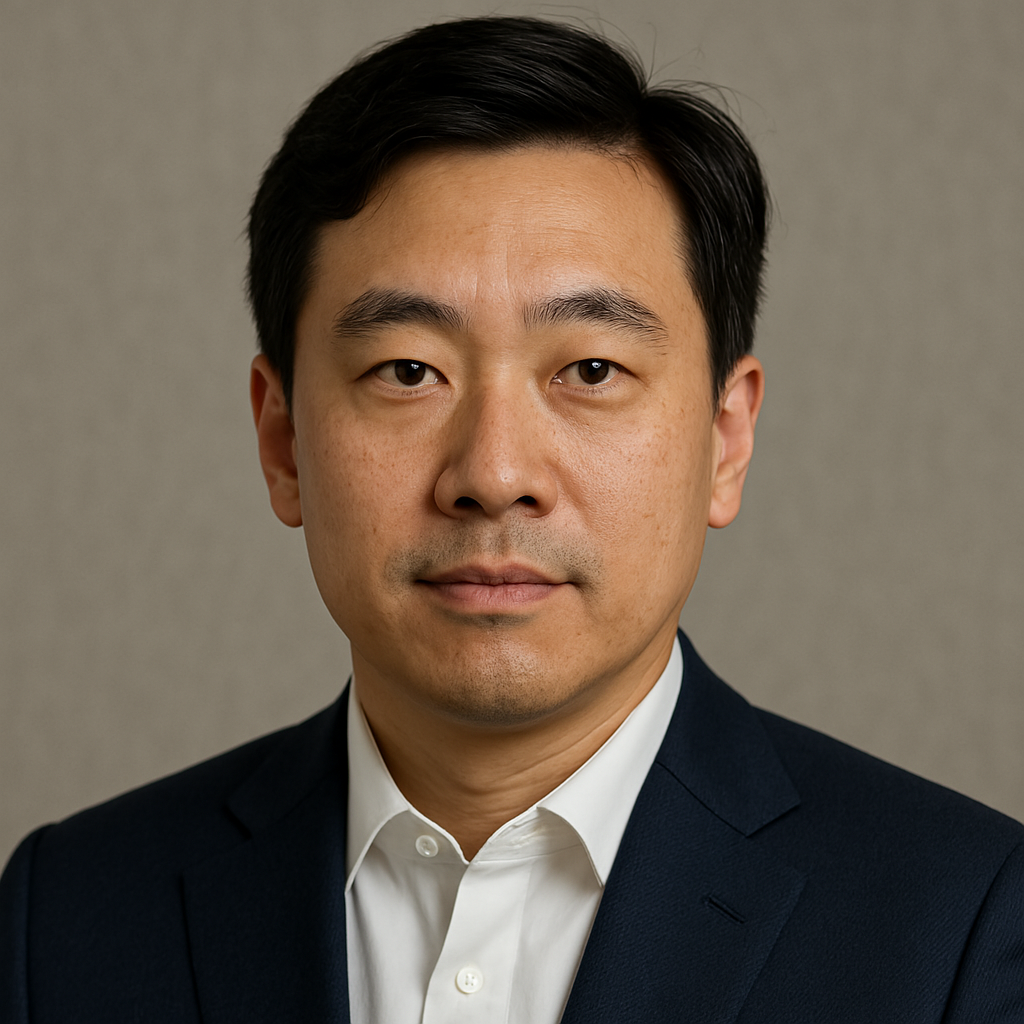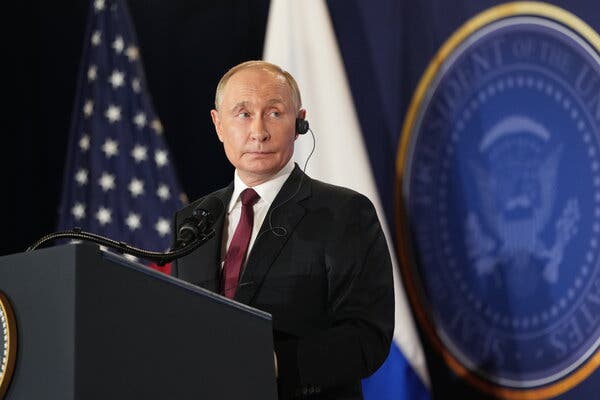Amid discussions prior to the summit about territorial exchanges and the technicalities of a potential ceasefire in Ukraine, President Vladimir Putin made it clear after his meeting in Alaska with President Donald Trump that his primary concern was not ending over three years of bloodshed, but rather what he termed the “situation surrounding Ukraine”—a phrase serving as a euphemism for his familiar grievances over Russia’s lost prestige.
Putin revived resentments he first voiced sharply at a 2007 security conference in Munich—rhetoric he reiterated in February 2022 to announce and justify his large-scale invasion of Ukraine—insisting after the Alaska summit that “a fair balance must be restored in the sphere of security in Europe and in the world as a whole.”
He argued that only by doing so could the “underlying causes of the crisis” in Ukraine be resolved—a Kremlin shorthand for Russia’s diminished standing since losing the Cold War following the Soviet Union’s collapse in 1991 and the end of Moscow’s dominance over Eastern Europe.
Putin did not directly mention the war. Instead, he expressed that he was “sincerely interested” in stopping “what is happening” because Russians and Ukrainians “share the same roots” and called the conflict “a tragedy and a great pain” for Russia. Portraying Russia as the victim of the war it initiated has been a central element of Kremlin propaganda since the invasion was announced as a “special military operation” aimed at protecting Russia.
Laurynas Kasciunas, a former Lithuanian defense minister whose country was part of the Soviet Union until 1991 and later joined NATO, described Putin and Russia as revisionists unable to accept the Cold War’s outcome. Today, NATO includes Poland, the Czech Republic, Romania, and other former members of Moscow’s now-defunct Warsaw Pact alliance.
Kasciunas noted that Putin avoids mentioning the war directly, instead referring to the “situation surrounding Ukraine” to portray the entire conflict as a Western conspiracy against Russia, with Ukraine used merely as a pawn and tool.
Russian Foreign Minister Sergey Lavrov underscored the Kremlin’s ambitions by arriving in Alaska wearing a sweatshirt emblazoned with the Cyrillic letters “CCCP,” symbolizing the USSR.
However, just before the Putin-Trump meeting on Friday, Poland reminded Moscow that the old order had vanished by staging a military parade along the Vistula River in Warsaw, featuring tanks and other predominantly U.S.-made equipment. The display, which also included warplanes and helicopters, commemorated Poland’s 1920 victory over the Red Army and highlighted the largest army in the European Union today.
In an apparent bid to soothe Putin’s bruised national pride over Russia’s reduced global status since the Cold War, Trump, in a post-summit interview with Fox News’ Sean Hannity, elevated Russia’s position in the global hierarchy. Ignoring China and the European Union, Trump declared, “We are number one, and they are number two in the world.”
This rhetoric, along with Trump’s warm welcome and applause for Putin upon his arrival in Alaska, was well received in Russia, where Kremlin-controlled media and nationalist commentators celebrated what they perceived as Russia’s reentry into the club of respected nations.
Aleksandr Dugin, a militant geopolitical theorist, expressed on Telegram, “I did not expect such a good outcome. Congratulations to all of us for a perfect summit. It was magnificent. To win everything and lose nothing, only Alexander III could do that,” referencing the 19th-century reactionary tsar who reversed his father’s liberal reforms.
Nationalist Senator Andrei Klishas, who after the full-scale war in Ukraine began in 2022 stated that Russia should only engage with the West “through binoculars and sights,” said the summit had “confirmed Russia’s desire for a lasting and just peace” and cleared the way for the special military operation to proceed “by military or diplomatic means.”
He asserted that Russia holds the battlefield advantage and is “liberating more and more territories,” adding, “A new architecture of European and international security is on the agenda, and everyone must accept it.”
Although the exact nature of this new security framework remains unclear, its core principle envisions Russia reclaiming its Cold War-era position as a hegemonic regional and global power treated as an equal by the United States, similar to arrangements made at the 1945 Yalta Conference.
Shortly before launching the 2022 invasion, Russia presented draft treaties to NATO and the United States demanding that NATO withdraw from Eastern Europe and permanently bar Ukraine from joining the alliance. These demands, which would reverse Russia’s Cold War defeat, were promptly rejected.
In a televised address announcing the invasion, Putin focused less on Ukraine itself and more on grievances about Western intimidation and disregard for Russia’s legitimate interests and status.
“Over the past 30 years, we have patiently tried to reach agreements with the major NATO countries on the principles of equal and indivisible security in Europe,” he said. “In response to our proposals, we have consistently encountered cynical deception and lies or attempts at pressure and blackmail, while the North Atlantic alliance continued to expand despite our protests and concerns.”
A central aspect of Putin’s drive to reshape the post-Cold War order has been his effort to weaken or dismantle the transatlantic relationship formed after World War II and expanded since 1991 with the inclusion of formerly communist Eastern European nations into NATO.
However, the invasion of Ukraine has backfired in this respect by increasing NATO’s presence near Russia’s borders. In 2023, Finland, which shares a 1,335-kilometer border with Russia, abandoned decades of military non-alignment to join NATO. Sweden also became a member.
Meanwhile, Trump, who has wavered in his support for Ukraine for months, stirred tensions within the alliance in Alaska by seemingly endorsing Putin’s plan for a broad peace agreement in Ukraine instead of pushing for the urgent ceasefire he claimed to want before the summit.
His moves received a chilly response in Europe, where leaders have repeatedly witnessed Trump reversing his stance on Ukraine after speaking with Putin.
Echoing the Russian narrative that Ukraine is a second-tier country whose interests cannot compete with Russia’s, Trump told Fox News, “Russia is a very big power, and they are not.”
He added that ending the war depends on Ukraine and Europe, not the United States. “Now it really depends on President Zelenskiy to make it happen,” Trump said. “I would also say that European nations have to get involved a little bit.”
Hardline former Russian President Dmitry Medvedev praised the summit for reestablishing “a proper mechanism for meetings between Russia and the United States at the highest level” and demonstrating that negotiations between the two major powers are possible even as Russia’s military campaign in Ukraine continues.


0 Comments
No comments yet. Be the first to comment!